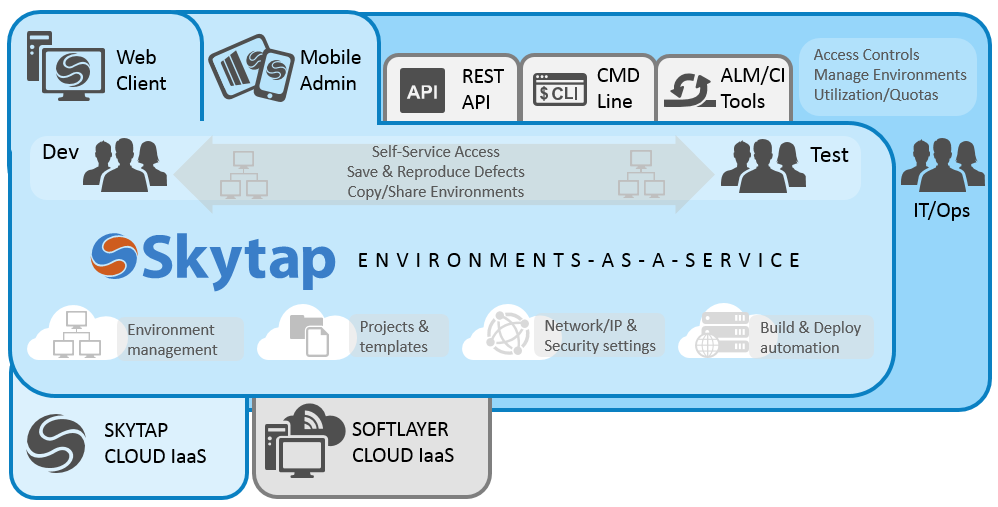You’re a large enterprise with a complex internal software development effort. You’ve had some success with Agile over the years, but quality could be better and release cycles are still way too long. So the word comes down from on high (maybe from the VP of Engineering or perhaps the CIO): time for DevOps.
You bring together the best and brightest from your development and operations teams and hammer out a rigorous automation protocol – initially within a single, on-premise development shop. Test-first development with automated tests, check (thanks to your Agile experience). Continuous integration (CI), check. Continuous deployment (CD), check.
So far, so good – so now it’s time to go global. After all, you have development shops around the world, and your primary QA team is in India. The sun never sets on your enterprise software lifecycle, as handoffs take place from one continent to another.
Only now you run into problems. The CD/CI routine worked well enough when everybody was in the same time zone, but complex handoffs to teams around the world leads to inconsistent environments, breakdowns in team communication, challenges tracking down defects, and fundamentally, a reversion to the old “throw it over the wall” mentality that led your leadership to move to DevOps in the first place.
Just as Agile seemed to work best with small teams but was difficult to scale up, now it seems DevOps is facing the same limitations. The good news: the problem of scaling DevOps is a problem we can solve. What large, distributed DevOps teams need are tools that support this enterprise context. That’s where Skytap Software comes in.
Skytap: Environments as a Service
Deployment and governance of dev and test environments is time-consuming and error prone. Moving to the cloud provides the building blocks, but putting together complete environments takes time and effort.
Skytap offers the ability to launch complete environments from “golden template” specifications. Such environments typically support complete multi-tier applications – including load balancers, firewalls, domain settings, and the entire network topology. Skytap works with Infrastructure-as-Code and build tools, including Chef, Puppet, Jenkins and many more, so organizations can realize the benefits of infrastructure specification at scale.
Once the DevOps team has the template, they can automatically generate or “clone” development or test lab environments in an identical state. From there it’s possible to copy, share, or suspend environments among dev and test teams, enabling rapid resolutions of issues. Skytap deploys the complete application stack in the correct sequence. Environment drift is now a thing of the past.
An illustration of Skytap’s architecture appears in the diagram below.

Skytap Environments-as-a-Service Architecture (Source: Skytap)
With Skytap, distributed development, test, and deployment teams can work in parallel without conflicts or blocking conditions. In fact, it’s even possible to “copy-to-region,” enabling a dev team in, say, North America to hand off to a test team in India at the end of their day, or for geographically dispersed teams to work in parallel.
Skytap also offers sophisticated IT ops control. Provisioning is self-service, and administrators can set permissions, quotas, and policies by user, project, or department. Idle resources can be suspended for cost savings or security purposes, and it’s possible to make any environment accessible to outside parties for testing via a secure, published URL.
Reproducing defects that other people find is typically quite challenging. Now, people can clone an environment in the state the defect was found and share it with other members of the team, so everybody can be working with identical copies of the environment in question.
Skytap supports the entire enterprise software product lifecycle – even beyond deployment to demos, proofs of concept, training, support, and end-of-life migration. Skytap is able to create virtual training labs, where classroom environments are now straightforward to configure, deploy, and reset in the cloud. As then as the software ages, it’s possible to test and validate the additions of patches or updates with Skytap before the software reaches customers.
Environments Key to “Automate all the Things” Principle
Automation is at the core of the cloud’s cost-effectiveness and efficiency, and automation is now the central enabler of DevOps. As enterprises realize that they are software-driven organizations and thus the speed of their software lifecycle is a driver of business velocity overall, they are putting increased emphasis on automation across the board – a principle that goes by the name automate all the things.
For enterprises with complex software environments, however, automation presents numerous challenges – and one of the most difficult is the creation and duplication of complete environments. Running scripts or recipes to provision or configure individual machines is only a small part of the story.
Skytap, therefore, is well-positioned with its Environments-as-a-Service offering, as it helps large organizations with the last mile of automating all the things – the environments themselves. Without such a capability, end-to-end automation will remain out of reach.
Jason Bloomberg will be joining Skytap on their upcoming webinar, Career Relevance in the DevOps Age, on May 12 at 8:00 PDT / 11:00 EDT / 16:00 BST. Click here for more information and to register.
Skytap is an Intellyx client. Intellyx retains full editorial control over the content of this article.



